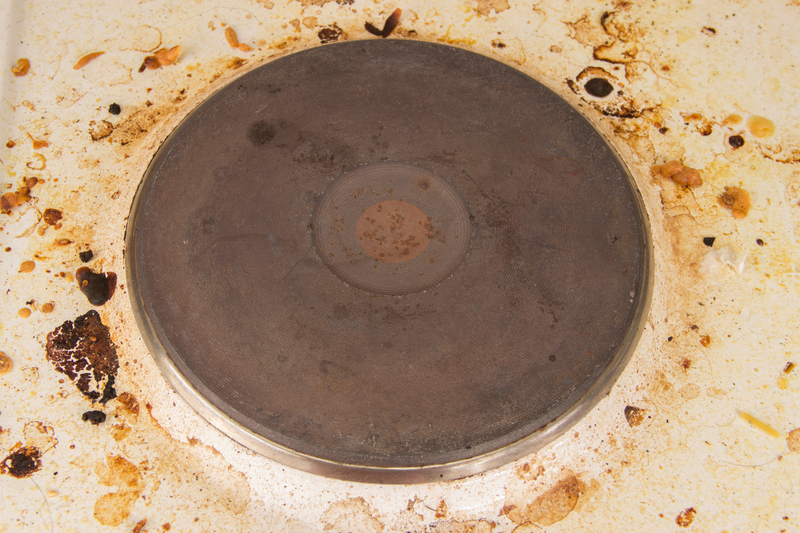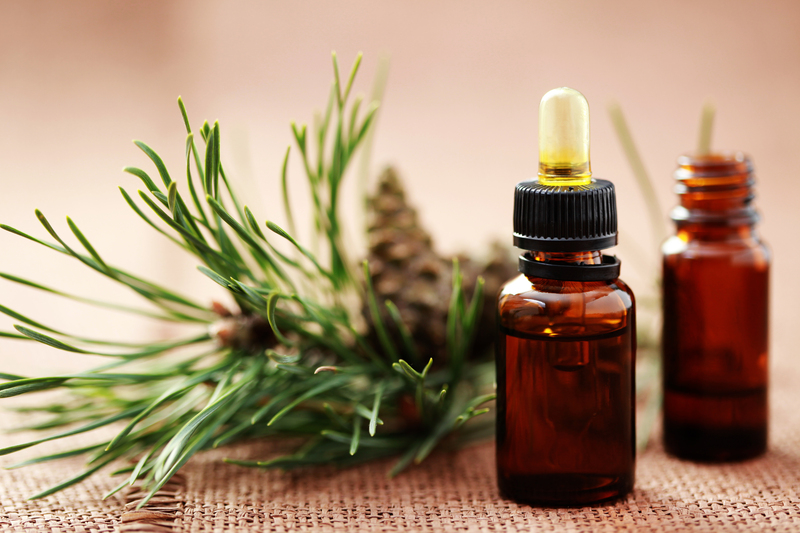Air Quality: The Hidden Factor Behind a Healthy Home
Posted on 12/09/2025
Air Quality: The Hidden Factor Behind a Healthy Home
When we think about creating a healthy home, we often consider diet, exercise, and regular cleaning. But rarely do we give a second thought to the air quality within our own four walls. Yet, poor indoor air quality can have a profound impact on your family's well-being. In this comprehensive guide, we'll dive into the importance of air quality, reveal the hidden risks of polluted indoor spaces, and provide actionable steps to ensure your home is truly a safe haven.
Why Air Quality Matters at Home
Most people spend up to 90% of their time indoors. This means the air you breathe in your home can significantly affect your short- and long-term health. Poor home air quality can contribute to respiratory diseases, allergies, and even impact your sleep and overall productivity. In fact, the EPA states that indoor air can be up to five times more polluted than outdoor air.
- Invisible Contaminants: Many pollutants in your home are invisible and odorless, making them especially dangerous.
- Vulnerable Populations: Children, the elderly, and those with respiratory conditions are at higher risk.
- Cumulative Impact: Prolonged exposure--even to low levels of indoor pollutants--can accumulate over time and trigger disease.
Understanding Healthy Indoor Air Quality
So, what exactly is healthy indoor air quality? According to experts, it's air that is free of hazardous pollutants, has proper humidity levels, and circulates efficiently without trapping dust or allergens. Consider these components:
- Low Pollutant Levels: Minimal presence of chemicals, smoke, or biological contaminants (like mold or pet dander).
- Balanced Humidity: Optimal range is between 30% and 50%, which helps prevent mold and dust mite growth.
- Regular Ventilation: Consistent air exchange with the outdoors or via mechanical systems prevents the buildup of indoor toxins.

Main Sources of Poor Indoor Air Quality
Discovering the main offenders behind bad air quality at home is crucial. Pollutants often originate from inside your house, but outdoor air can also bring in contaminants.
Common Indoor Air Pollutants
- Volatile Organic Compounds (VOCs): These are gases released by paints, cleaning supplies, furniture, carpets, and even air fresheners.
- Particulate Matter: Dust, pollen, pet dander, and tiny particles from cooking can remain suspended in the air, irritating lungs.
- Mold and Mildew: Moist areas can encourage the growth of mold spores, which trigger allergies and respiratory distress.
- Carbon Monoxide: Combustion appliances like gas stoves, heaters, and fireplaces can release this deadly, odorless gas.
- Radon: A naturally occurring radioactive gas that can seep from the ground into basements and is linked to lung cancer.
- Tobacco Smoke: Secondhand smoke introduces hundreds of harmful chemicals into your indoor environment.
Signs That Your Home's Air Quality May Be Poor
Poor air quality in the home doesn't always present itself transparently. Here are some warning signs:
- Frequent respiratory issues: Chronic coughing, sneezing, or congestion among members of the household.
- Persistent odors: Musty, stale, or chemical smells that linger despite cleaning and ventilation.
- Visible dust buildup: Dust on surfaces or around air vents suggests poor filtration or circulation.
- Mold patches: Discolored spots on walls, ceilings, or inside bathrooms point to excess humidity and mold growth.
- Fatigue and headaches: Unexplained tiredness or headaches might signal exposure to CO2, VOCs, or reduced oxygen levels.
The Health Impact of Air Quality
Indoor air pollution is linked to a wide spectrum of health problems, ranging from mild to severe. Ensuring clean indoor air is especially important for children, the elderly, and anyone with cardiovascular or respiratory conditions.
Short-term Effects
- Eye, nose, and throat irritation
- Headaches or dizziness
- Aggravated asthma or allergy attacks
Long-term Consequences
- Chronic respiratory diseases (e.g., asthma, bronchitis)
- Increased risk of heart disease and stroke
- Lung cancer (notably from radon exposure)
- Suppressed immune system, leading to more frequent illnesses
Children and Air Quality: Because their lungs are still developing, children are especially susceptible to pollutants. Studies show that poor air quality at home can increase the risk of childhood asthma and lead to lower cognitive development.
How to Improve Air Quality and Ensure a Healthy Home
You may be wondering how to create healthier indoor air for your loved ones. Below are the most effective, science-backed tips to reduce hidden pollutants and boost the overall air quality.
1. Increase Ventilation
- Open windows regularly to let fresh air in, especially while cleaning, cooking, or after showering.
- Install exhaust fans in the kitchen, bathrooms, and laundry areas to remove moisture and airborne contaminants.
2. Control Humidity Levels
- Maintain humidity between 30% and 50%. Use dehumidifiers in damp areas to deter mold, or humidifiers when air is too dry.
- Fix leaks quickly and ensure bathrooms and kitchens are properly sealed to prevent chronic dampness.
3. Keep Your Home Clean
- Vacuum frequently using HEPA filters to eliminate fine dust, pet hair, and allergens.
- Mop floors and wipe surfaces with non-toxic, fragrance-free cleaners to prevent chemical residue buildup.
- Launder bedding and drapes regularly to reduce dust mites and pollutant accumulation.
4. Reduce Chemical Pollutants
- Opt for low-VOC or VOC-free products when purchasing paints, cleaning supplies, and furniture.
- Avoid aerosol sprays and synthetic fragrances. Switch to natural alternatives like essential oils (used cautiously) or baking soda.
- Store chemicals safely in dedicated, ventilated areas, away from living spaces.
5. Invest in Quality Air Purification
- Use air purifiers with true HEPA and activated carbon filters, especially in bedrooms and high-traffic living areas.
- Replace HVAC filters every 3 months or as recommended to keep your system running efficiently.
- Consider ultraviolet (UV) air purifiers to destroy bacteria, viruses, and mold spores.
6. Don't Allow Smoking Indoors
- Secondhand smoke is one of the most toxic pollutants found in residential air. Have a strict no-smoking policy inside your home.
7. Test for Radon and Carbon Monoxide
- Radon: Install a radon test kit in your basement or ground floor. If levels are high, seek professional mitigation.
- Carbon Monoxide: Equip your home with detectors near bedrooms and fuel-burning appliances. Never ignore alarms.
Natural Ways to Improve Indoor Air Quality
Beyond mechanical aids, you can also use natural strategies to freshen and purify the air.
- Add houseplants: Certain plants, such as snake plant, peace lily, and spider plant may help reduce specific toxins--though effects can be limited in practical home settings.
- Avoid paraffin candles: Opt for beeswax or soy candles, which burn cleaner and release fewer chemicals into the air.
- Let the sunshine in: Sunlight discourages mold and bacteria growth on home surfaces.
Regular Maintenance for Lasting Clean Air
Consistent upkeep is vital to sustain a healthy indoor environment. Use this checklist to make maintenance part of your household routine:
- Change HVAC and air purifier filters on schedule
- Schedule annual HVAC inspections to ensure proper airflow and catch issues early
- Check for leaks and moisture under sinks and around windows
- Deep clean carpets and upholstery every few months
- Keep vents and registers dust-free
- Ensure crawl spaces and attics remain dry and ventilated
Smart Technology for Better Indoor Air
Advancements in smart home air quality monitors allow you to track unseen changes in your home's air. These devices can detect VOCs, carbon dioxide, humidity, and particulate concentrations, giving you real-time feedback and alerts. Some even integrate with HVAC systems or purifiers to automatically adjust air handling.

Frequently Asked Questions
-
What is the recommended indoor air quality standard?
According to the EPA, maintaining minimal levels of pollutants, controlling humidity at 30-50%, and adequate ventilation meets recommended standards. -
How often should I clean my air ducts?
Every 3-5 years, or if you see visible mold, smell mustiness, or notice persistent dust buildup. -
Are air purifiers worth it for air quality in the home?
Yes, especially for allergy sufferers or homes near sources of outdoor pollution. Look for HEPA and carbon filtration. -
Can indoor air quality affect sleep?
Absolutely--high CO2 or allergens can reduce sleep quality, cause congestion, and lead to frequent waking.
Conclusion: Breathe Easier with Good Air Quality
Air quality may be the hidden factor behind a truly healthy home. By understanding the risks, recognizing symptoms, and implementing evidence-based solutions, you can ensure that your family breathes clean, nourishing air every day. Don't overlook the importance of indoor air quality--invest in your health, starting at home.
For more tips and regular updates on home wellness, bookmark this page and share it with family and friends who care about creating a healthier indoor environment.





